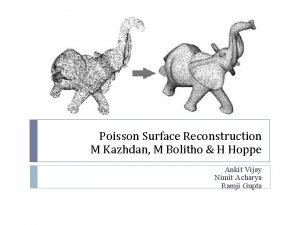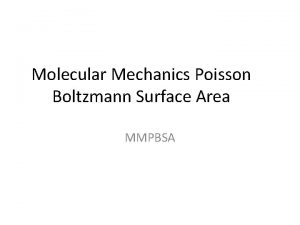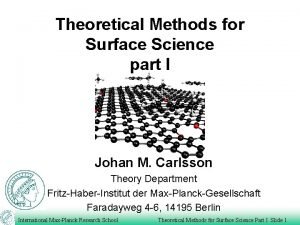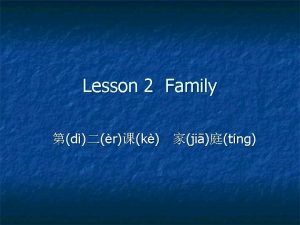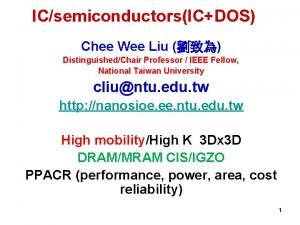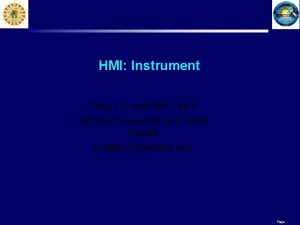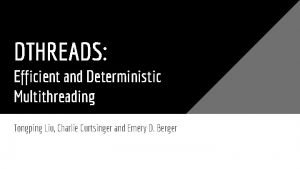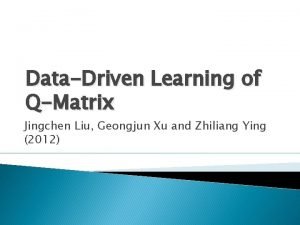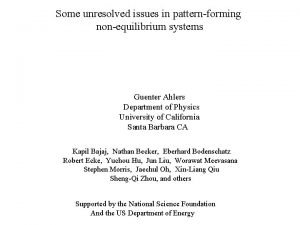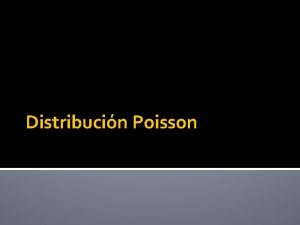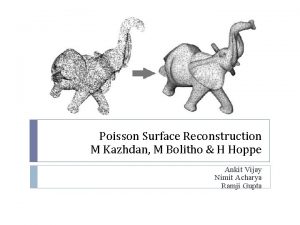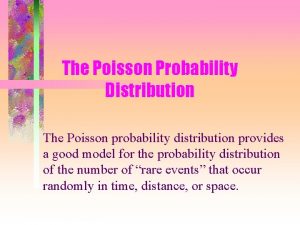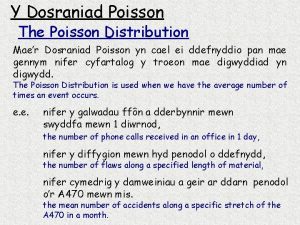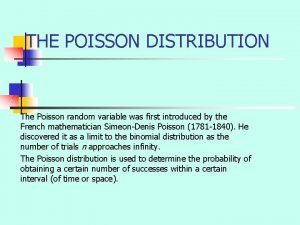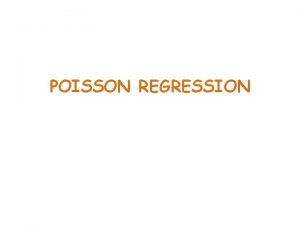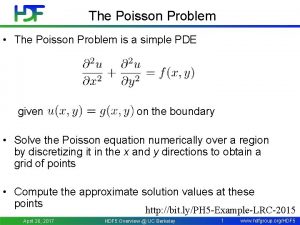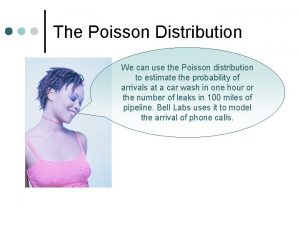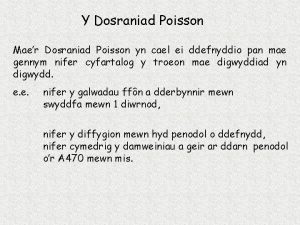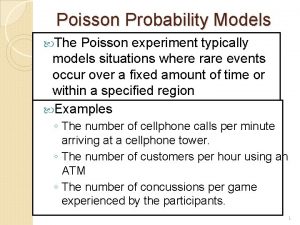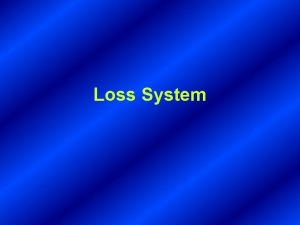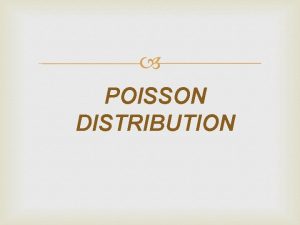Poisson Surface Reconstruction LIU Shishi YOU Qingfei WANG



























- Slides: 27

Poisson Surface Reconstruction LIU Shishi YOU Qingfei WANG Wentao HONG Su

Outline n n n Introduction Mathematical modeling and related work Poisson reconstruction approach Implementation Analysis of Non-uniform Samples Results

Introduction n Reconstructing 3 D surfaces from point samples is a well studied problem in computer graphics.

Introduction n The key insight of Poisson surface reconstruction is that there is an integral relationship between oriented points sampled from the surface of a model and the indicator function of the model.

Mathematical modeling and related work n n In order to compute the indicator function, the most important is to invert the gradient operator. ——find the scalar function whose gradient best approximates a vector field defined by samples, shown as :

Mathematical modeling and related work n If we apply the divergence operator, this problem transforms to standard Poisson problem.

Poisson problem n n n In mathematics, Poisson's equation is a partial differential equation of elliptic type with broad utility in electrostatics and theoretical physics. The Poisson equation is

Poisson reconstruction approach n 1 Defining the gradient field n 2 Approximating the gradient field n 3 Solving the Poisson problem

Poisson reconstruction approach n The input data S is a set of samples s, each consisting of a point s. p and an inward-facing normal s. N, assumed to lie on or near the surface of an unknown model M.

Defining the gradient field n Lemma:

Defining the gradient field

Implementation n Uniformly distributed samples n Non-uniformly distributed samples

Function Space n n n An adaptive octree to represent and solve the Poisson system Minimal octree Node function and base function

Base function n n Approximate a Gaussian with unit-variance A compactly supported function

Vector Field Definition n Use trilinear interpolation to distribute the sample across the eight nearest neighbour nodes

Poisson Solution(1) n Poisson Equation n Solving for function n o-th coordinate of |O| dimensional vector v minimizing:

Poisson Solution(2) • Matrix Form • Let then • Our problem is equal to finding x for

Isosurface Extraction Average value: Isosurface:

Marching Cube • The most common used way of face drawing. • Key point: find the intersection of one cube the indicator function. • Construct the triangle network in every cube, a divide-and-conquer approach.

Marching Cube

Marching Cube n Calculate the value of indicator function of 8 vertices. Inside or outside : 256 possibilities. p In fact, only 14 patterns are needed. p n Do the interpolation in the edge to find the point of surface. n Make the triangle.

Marching Cube n The problem is the crack p n the vertexes in the adjacent faces may have different ways of connection. The solution p if there are two or more “zero-crossing”, divide the node of cube.

Non-uniform Samples n “splatting” the points into the grid. n Estimate the density of sampling for modifiy our formula. p Expressed by the sum of the node function

Non-uniform Samples • Calculate the vector field with the weight of density. • The modified formula • Another problem in sparsely sampling region • • poor noise filtering Adapted the filter width to the local sampling density.

Non-uniform Samples The formula: In which,

Results This figure shows our reconstruction results for the "dragon" model at octree depths 6, 8, 10. As the tree depth is increased, the reconstructions capture finer detail.

 Alex liu cecilia liu
Alex liu cecilia liu Líu líu lo lo ta ca hát say sưa
Líu líu lo lo ta ca hát say sưa Poisson reconstruction
Poisson reconstruction Poisson boltzmann surface area
Poisson boltzmann surface area Surface reconstruction
Surface reconstruction Surface reconstruction
Surface reconstruction Surface reconstruction from unorganized points
Surface reconstruction from unorganized points Ni jia you ji ge ren
Ni jia you ji ge ren Li you and wang peng
Li you and wang peng Lateral surface
Lateral surface High surface tension vs low surface tension
High surface tension vs low surface tension Curved surface area of cone
Curved surface area of cone You say that you love rain
You say that you love rain Eat meals that are nutritious agree or disagree
Eat meals that are nutritious agree or disagree If you think you can you can poem
If you think you can you can poem Tell me what you eat and i shall tell you what you are
Tell me what you eat and i shall tell you what you are Wherever you lead i will follow
Wherever you lead i will follow Diane liu md
Diane liu md Chiu-chu liu
Chiu-chu liu Lucy loo with my girls
Lucy loo with my girls Chee ming liu
Chee ming liu Yang liu stanford
Yang liu stanford Dthreads
Dthreads Jingchen liu
Jingchen liu Karin björsten liu
Karin björsten liu Seismoscope
Seismoscope Chim đậu trên cành chim hót líu lo
Chim đậu trên cành chim hót líu lo J liu
J liu


